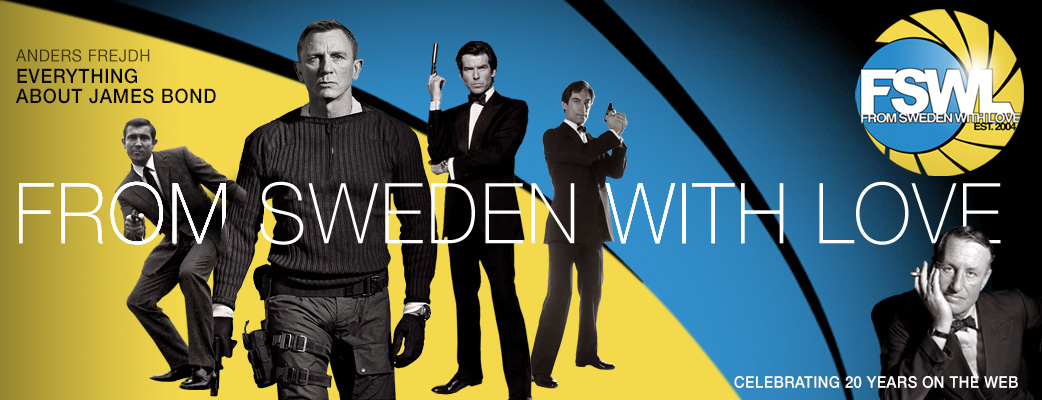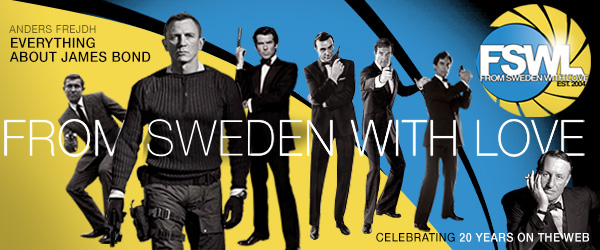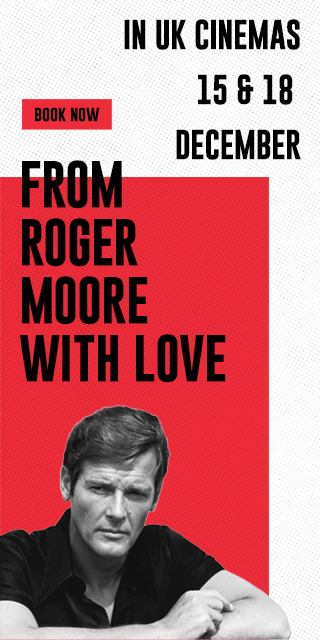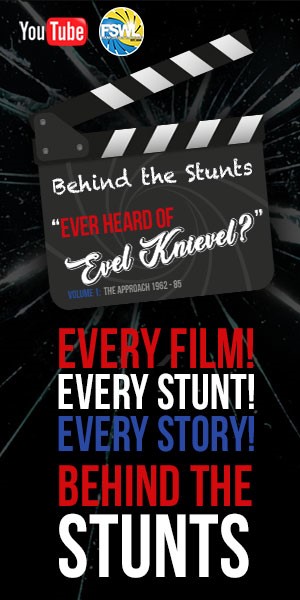Website last updated: 10-6-2025
Home
Book & Film reviews
Competitions
Event
FSWL Merchandise
In Memoriam
Interviews
James Bond 007 collection
James Bond 007 films
James Bond 007 games
James Bond 007 literature
James Bond 007 news
James Bond 007 products
James Bond 007 shop
James Bond 007 stars
James Bond Fan Clubs
Swedes in the Bond films
A Clockwork James Bond director in Matera for No Time To Die
By: Greg Bechtloff
Published:
2019-10-01
2019-10-01
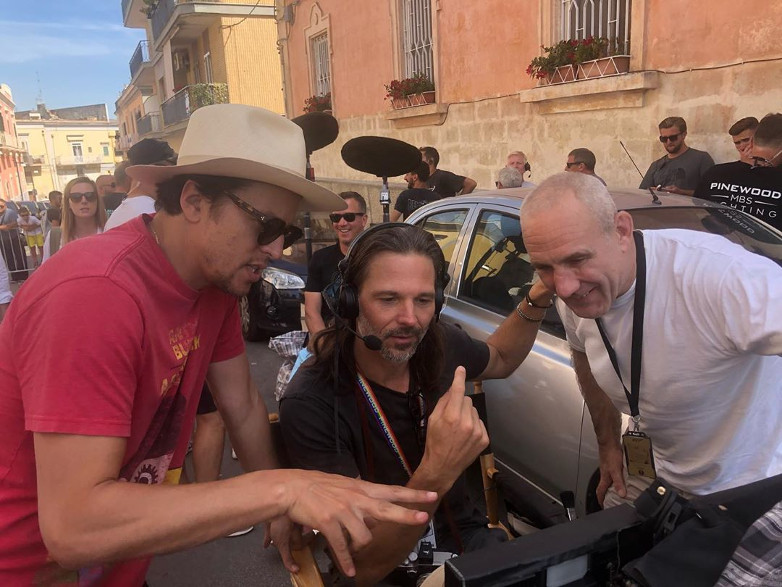
We see American director Cary Fukunaga wearing a red t-shirt depicting the famous artwork from Anthony Burgess’s A Clockwork Orange. This is the stylized bowler hat and eye with mascara as seen on the book cover and especially the film.
Of course that is a t-shirt that a cool kid like Cary Fukunaga would wear. It struck me though that that Clockwork Orange shirt brings to mind a whole slew of James Bond links.
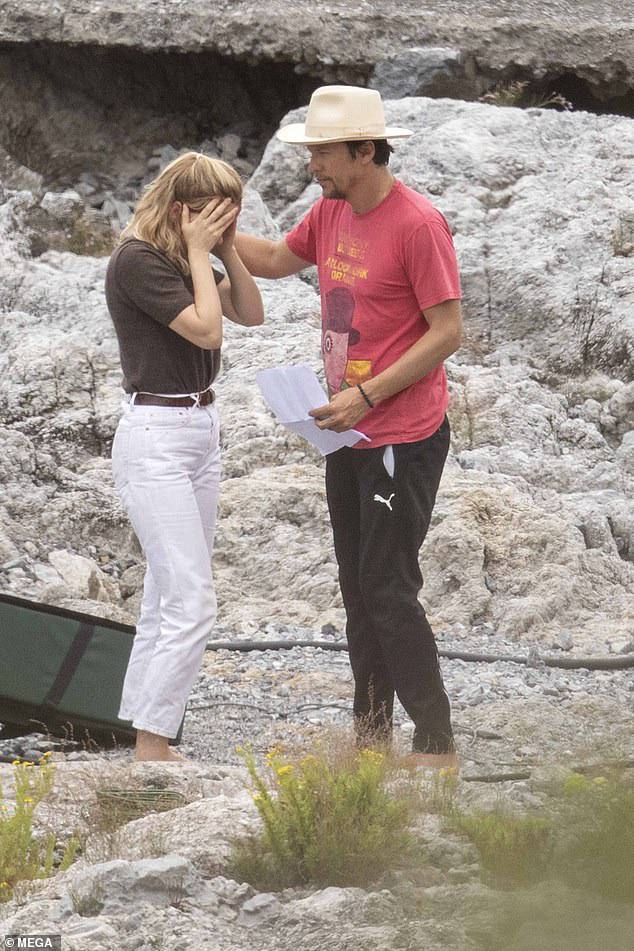
French actress Lea Seydoux with director Cary Fukunaga on location in Matera.
With that in mind, From Sweden With Love is going to take a detour and explore just what all those Anthony Burgess/James Bond references are.
We start with the author Anthony Burgess who was born in 1917. Burgess was a British novelist and essayist. He was also an accomplished music composer and considered himself more of a musician than an author. Burgess also tried his hand at screenwriting and did work on projects for Lew Grade as well as Franco Zeffirelli.
Burgess also wrote a spy novel in the 1960’s. Called Tremor of Intent, it took on both ends of the espionage genre with elements similar to Ian Fleming and John le Carre.
Burgess died in 1993. Incidentally he was eulogized at a memorial service by future James Bond continuation author William Boyd.
His most famous novel was A Clockwork Orange. Published in 1962, the novel posited a futuristic United Kingdom where dangerous street gangs terrorized helpless Londoners.
The novel is written from the perspective of Alex, a brutal but somewhat likable thug. Alex tells his story in the invented slang of his futuristic London gang.
Readers at first find it hard to follow but eventually the meaning of the words become clearer when you see them in the context of their use.
The novel proved to be a smash and has gone onto be certified as a classic book. The Modern Library lists it as one of the 100 Best English Novels of the 20th Century.
As the author of a classic book, Burgess had the cache to provide commentary on a wide variety of subjects and to be listened to.
One subject that Burgess extolled were the James Bond novels of Ian Fleming. An unapologetic fan of Fleming’s work, Burgess championed the character of James Bond. Like fellow novelist, Kingsley Amis, Burgess often declaimed the greatness of Ian Fleming’s creation.
In a 1987 preface to reprints of the Fleming novels, Burgess wrote, “if one of the tasks of the artist is to enhance life, then no one can deny Fleming the title of artist”.
A Clockwork Orange entered the zeitgeist when it was turned into a film by legendary director Stanley Kubrick. Starring Malcolm McDowell as Alex and with an eclectic music soundscape by Walter (later Wendy) Carlos, this 1971 film has entered the cinema stratosphere.
Pummeled at the time of its release due to its high sex and violence content, the film faithfully turned Anthony Burgess’s novel into celluloid. Its costumes and imagery live in our collective conscience to this day. The shirt that Cary Fukunaga wore depicts the famous image of Alex with the bowler hat and mascara,
The film featured a slew of actors who have appeared in many different Bond films
Steven Berkoff from Octopussy plays a policeman. Anthony Sharp who played Lord Ambrose in Never Say Never Again, plays another government minister in A Clockwork Orange.
Kubrick favorite Philip Stone plays Alex’s father. Stone famously played the caretaker of the Overlook Hotel in The Shining. Bond fans may not realize it but Philip Stone is SPECTRE #5 in Thunderball. He reports to Blofeld of the “consultation fee” for the British Train Robbery.
Other actors who have appeared in Bond films include Pat Roach who plays a bouncer at the Korova Milk Bar. Roach played Lippe, the man who attacks Sean Connery in the gym in Never Say Never Again.
Another muscle man in A Clockwork Orange is David Prowse. Prowse plays the bodyguard/companion to Patrick Magee after Magee has been attacked by Alex’s gang. Prowse played Frankenstein who is seen wandering around Woody Allen’s HQ in the 1967 Casino Royale. Prowse more famously was the body inside the Darth Vader outfit in a small film called Star Wars.
Fast forward to the mid-1970s where pre-production has started on Roger Moore’s third Bond film which will be called The Spy Who Loved Me.
Ian Fleming’s novel The Spy Who Loved Me (1962) describes a French Canadian woman named Vivienne Michel as she travels around to forget a series of feckless relationships. Caretaking at a remote upstate New York motel she encounters two mafia thugs. Their job is to kill her and torch the joint for the insurance money for their mob boss.
In the middle of a thunderstorm and just as it looks like she will be raped before dying, a mysterious stranger named James Bond turns up. His car has a flat and he needs shelter for the night.
Told from Vivienne’s point of view, this is a very different type of Fleming book.
Fleming stipulated that a film version could only use the title and nothing of the novel’s story.
Eon was willing to comply and set about enlisting a cadre of different writers to come up with a brand new script, preferably dealing with nuclear submarines.
Among the many writers whom Eon enlisted was A Clockwork Orange author Anthony Burgess.
Burgess wrote an appreciation of James Bond on the occasion of the 25th Anniversary of the film series. This was on the eve of the new Bond film The Living Daylights with new 007 Timothy Dalton.
This essay appeared in the April 1987 issue of Life Magazine. In it, Burgess writes of his experience as a short lived James Bond screenwriter.
Burgess explains how he was on a lecture tour of the USA at that time. He was approached by Albert Broccoli and Guy Hamilton (the original director of Spy) and charged with coming up with a film treatment. They even presented him with a typewriter to do so which Burgess used in a series of hotel rooms in between his lecture tour.
As you can imagine from the author of A Clockwork Orange, Burgess’s idea for a James Bond story had a twisted storyline.
Burgess says his story involved an Orson Welles like villain in a wheelchair. This villain headed an organization called the Consortium for the Hastening of the Annihilation of Organized Society (CHAOS).
Their goal is to humiliate world leaders whilst also destroying their civic and religious authority. The pope has to whitewash the Sistine Chapel or a convent will be blown up. The queen and Commonwealth ministers must parade around nude on TV or the Sydney Opera House where they are at will be destroyed.
The villain also has a daughter with some sort of port wine disfigurement on her face. She is very beautiful but this stain appeared after a badly ended affair with British secret agent 009. She seeks vengeance against the British Secret Service.
James Bond begins his inquiry at a shady Bavarian medical clinic where strange implants are being put into innocent people.
Suffice it to say that the plot is very “out there” and was not pursued further by the producers. Check out the original essay to get the full gist from Burgess.
Anthony Burgess does bring everything back to Ian Fleming however. Burnishing his erudite literary credentials, Burgess extols the character of James Bond. Burgess writes that Bond lives life with “Elizabethan gusto”. The novels though also appeal to “middlebrows”; a feat that Shakespeare achieved as well.
It all seems very circular and fitting that the brand new director of the current James Bond film is wearing a shirt of another British author’s famous creation. The fact that Anthony Burgess himself was a James Bond fan and even wrote a film version for Bond makes it all the more richer.
Burgess’s own thoughts on James Bond neatly sum things up. He writes:
“The elimination of James Bond, either by Her Majesty’s enemies or by the disfavour of the movie going public, is not to be thought of. He goes on”.
Tags:
#articles
#bond_25
#greg_bechtloff
Tweet
